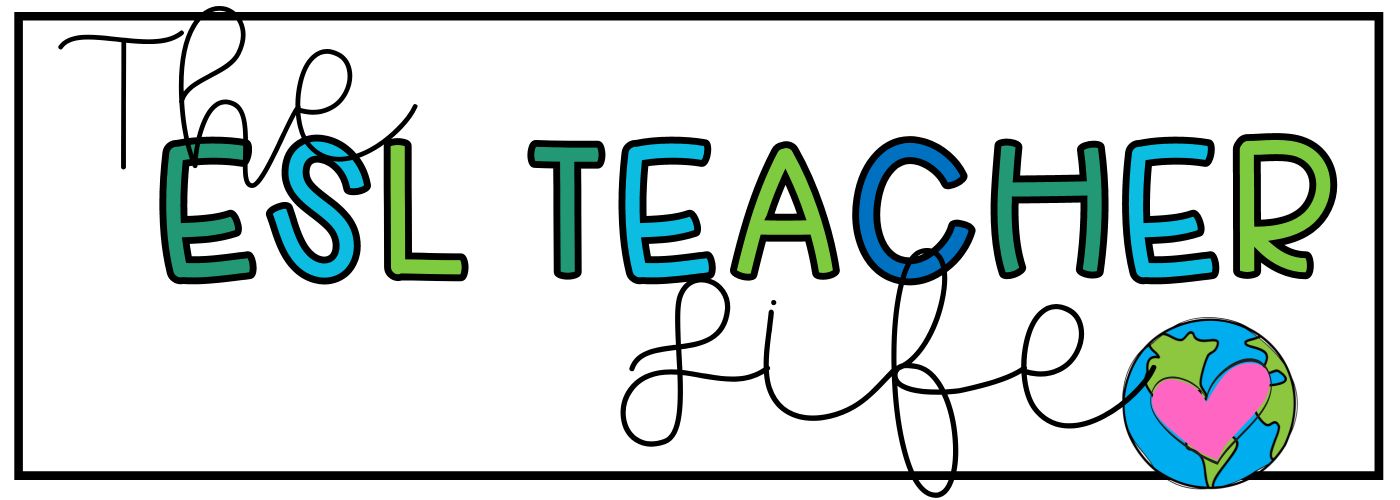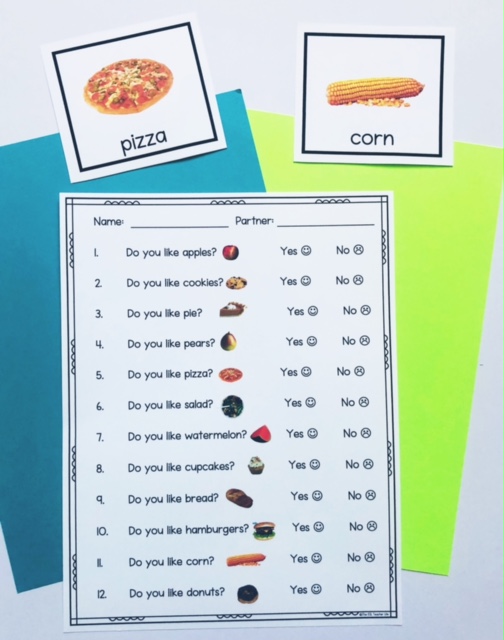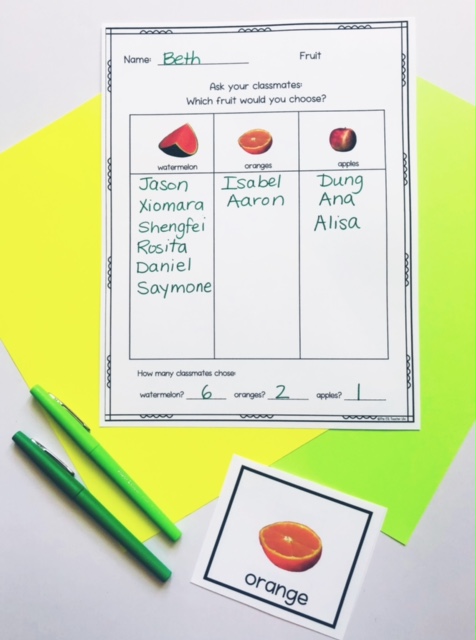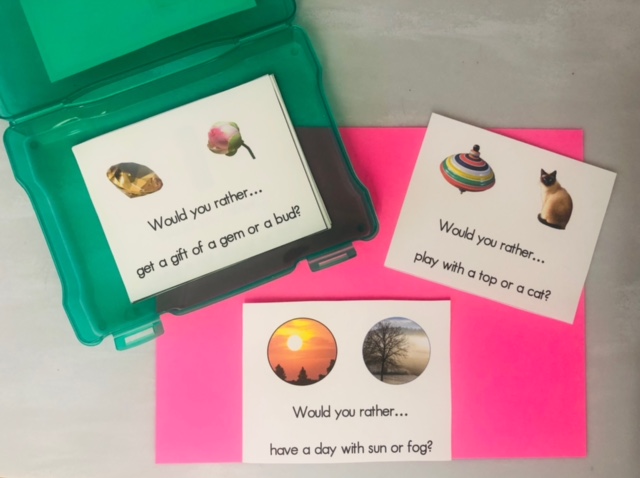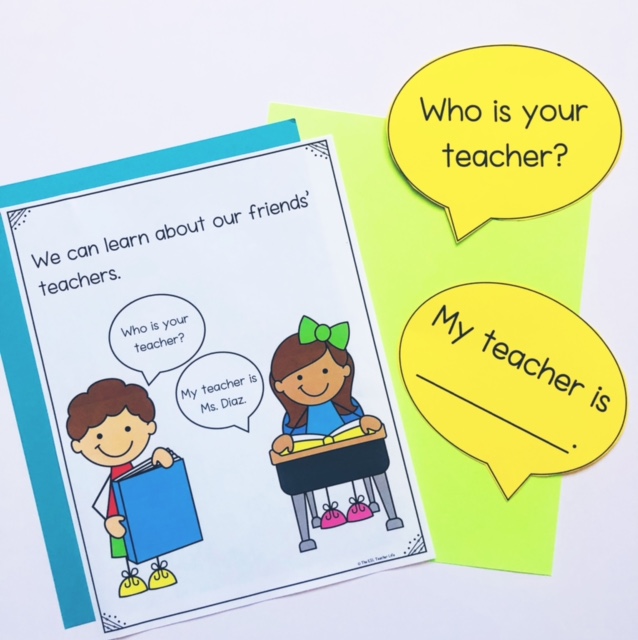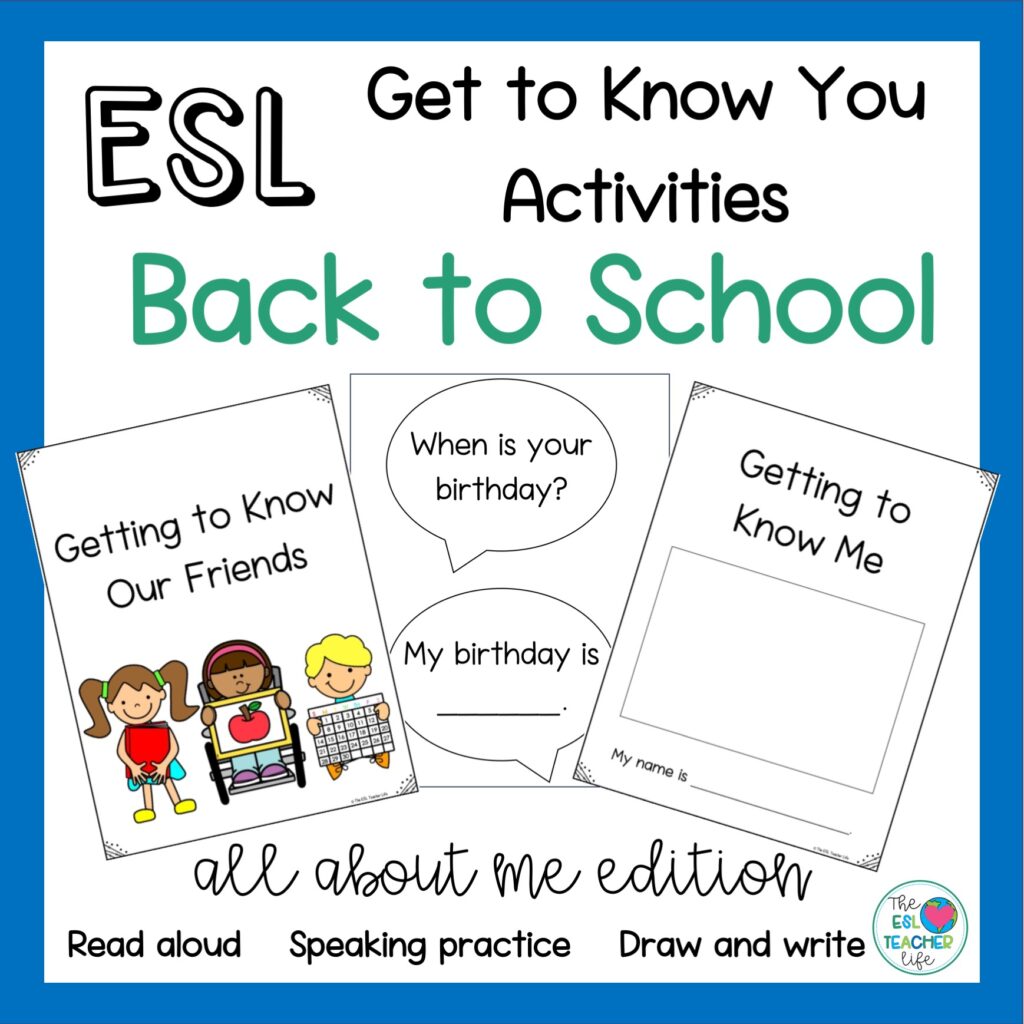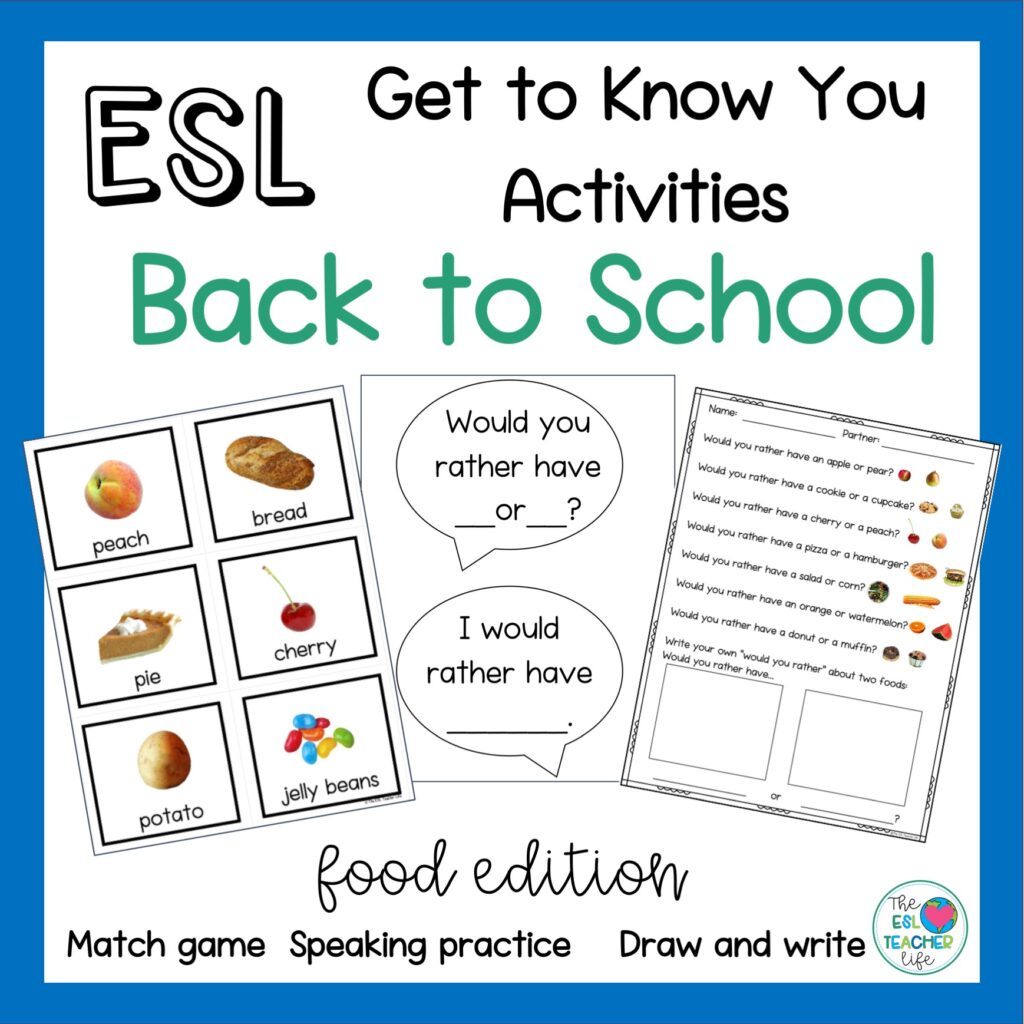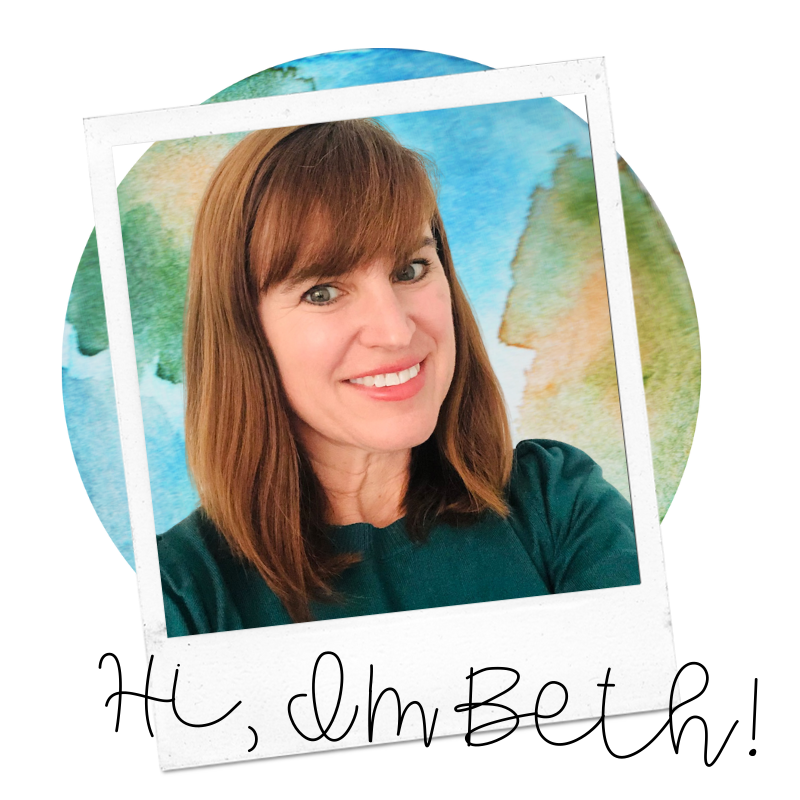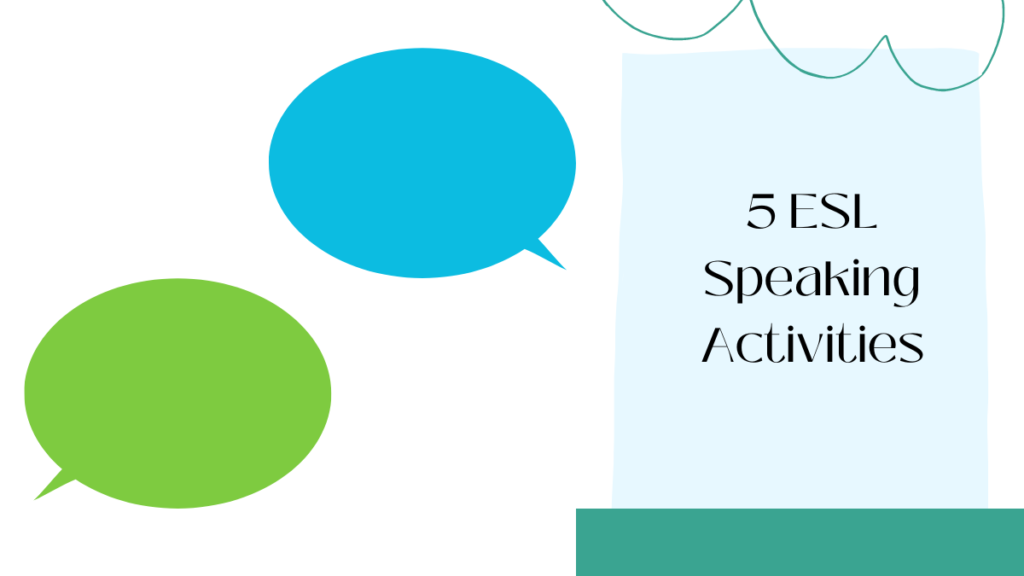
Here are 5 ESL Speaking Activities to get students talking. These activities can be adapted for different grade and proficiency levels by changing the topic or the complexity of the sentences.
Interviews
In this first activity, students pair up and ask a series of questions. Questions are based on personal interests or academic content depending on the purpose or time of year. I like to follow-up interviews with students sharing something they learned about (or from) their partner. Here is an example of sharing food likes and dislikes for younger Newcomer students. (I always teach the vocabulary first, then model a few examples with the full question and answer.) Students ask their partner each question, then students switch roles. When interviews are complete, students can share one thing they learned about their partner with the whole group. Afterward, I like to follow up with a drawing/ writing activity for students to share their own likes and dislikes to expand the food conversation and allow students to talk about food from their cultures.
Surveys
Secondly, surveys are similar to interviews, but in this case, students are polling their classmates. This is better with larger groups. I have seen it work well in Kindergarten classrooms and up, and it is great for practicing asking questions. When given a response, classmates can sign their names or the student doing the survey can use tally marks to practice that math skill as they keep track of responses.
Would You Rather?
Likewise, this popular activity gets students talking about their choices. This is a great place to start with expressing opinions and answering “why” questions. I loved it when a new student explained to me that he would rather have a foggy day than a sunny one for two reasons. According to him, foggy weather is much better for playing soccer. He explained it wouldn’t be as hot without the sun (we had just had a string of 90 degree days) and he could sneak down the soccer field in the fog and his opponent wouldn’t see him. I learned a lot about his reasoning and his love of soccer. There are all kinds of “would you rather” activities online, many organized by topic and subject. The cards below are from my TpT store-just click on the photo for the link.
20 Questions
For this activity, all you need is a photo, and a willing volunteer to answer yes/ no questions about the image. A student gets a picture card and other students take turn asking yes/ no questions. The teacher should model the types of questions that are most helpful.
Here is an example:
Is it an animal? Yes.
Does it have four legs? No.
Does it have two legs? Yes.
Is it a bird? Yes.
Can it fly? Yes.
Is it an eagle? No.
Is it a duck? Yes.
Not only is this activity low prep as you only need a picture, but it can also be used to review vocabulary or spark interest in a new unit.

Using Speech Bubble Models
Finally, this example is less of an activity and more of a display idea. As shown below, you can use speech bubbles to model dialogue and sentence stems that will be used in class. These can also be projected or drawn by hand. As students’ proficiency increases, the sentence starters can become more complex. These provide a visual model for students not only for for simple introductions and interviews, but all year long when modified for the content and language expectations.
To check out some of the ESL speaking activities above, click on the resources below.
Be sure to both follow me on Instagram @the_esl_teacher and message me for questions about this post.
You might also find these other posts helpful:
–Vocabulary Activities for ESL
-Post by my friend at Language Adventurist:
